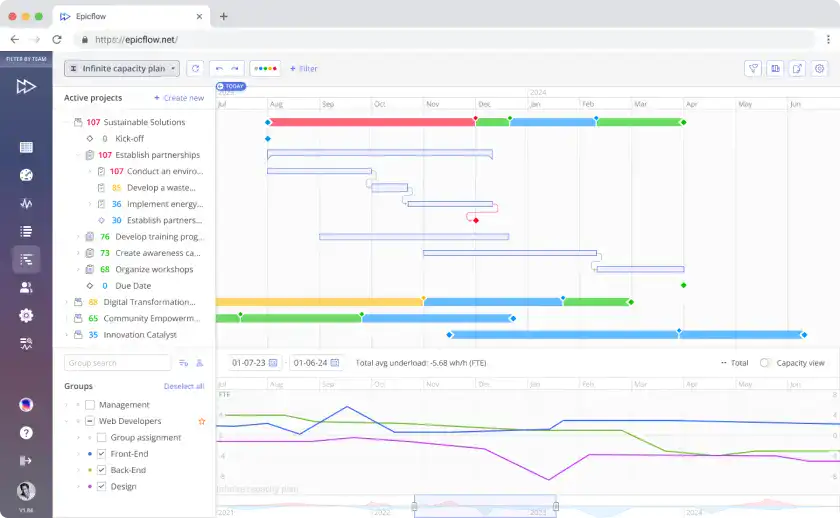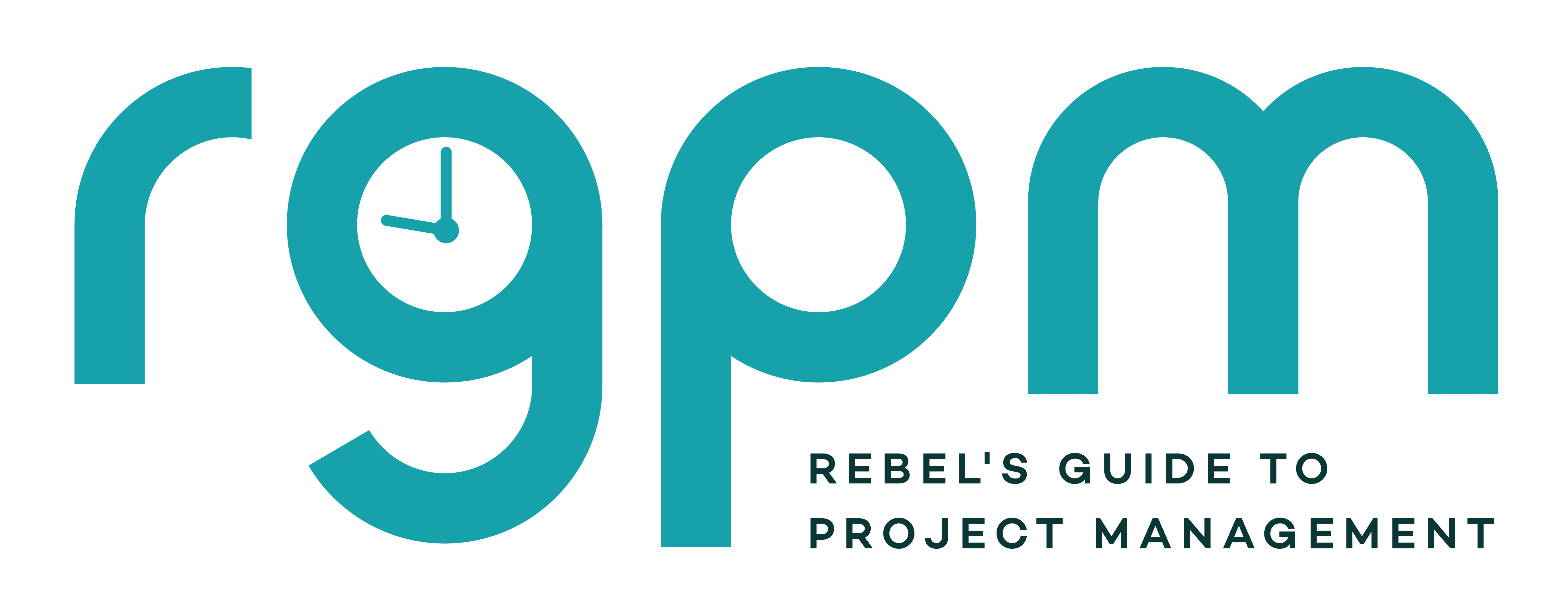Maximizing PMO Impact with Value-Based Portfolio Management
“The PMO of the future must transition from traditional administrative roles to becoming strategic value-drivers capable of directly influencing organizational performance,” says Ben Rawson, a seasoned professional in the fields of portfolio and resource management.
More and more experts emphasize that PMO’s purely administrative function is no longer sufficient. Organizational environments have become more complex and dynamic, with multiple concurrent projects, shared resources, and competing priorities.
Business leaders have also been rethinking their vision of projects: they are seen as investments that should generate value for organizations. This redefines the approach to managing projects, programs, and portfolios, and the PMO’s role in the company.
There’s a need to shift the role of a PMO from support and oversight of project management processes to delivering value. In this context, value-based portfolio optimization emerges as a game-changing approach that empowers PMOs to transform into value-generating organizational structures.
The shift from project control to value delivery: the evolution of the PMO’s role
To understand the need for a shift in the PMO’s role towards value engineering, let’s quickly recap on its traditional functions and consider the reasons why they have lost their relevance.

The traditional role of a PMO in organizations
Traditionally, PMOs have played a supportive and controlling role in organizations: they established standards, tracked progress, and compiled reports for stakeholders.
Here are some typical functions of a PMO:
- Establishing governance: Approving project management standards and methodologies as well as monitoring compliance with them.
- Tracking performance and reporting: Collecting data, compiling reports, and sharing them with senior management.
- Providing project management best practices: Training and mentoring for project managers.
- Administrative functions: Managing documentation, scheduling, meeting coordination, and other administrative work.
- Resource management: Allocating resources across projects, monitoring their utilization, and resolving resource conflicts.
These functions are mostly about control, standardization, and oversight. But the main problem is that this administrative role of a project management office doesn’t fit into the organizational context anymore; it was suitable for more stable business environments – and how stable is your environment right now?
Why should the PMO’s role evolve now?
Times have changed. The present-day organizational setting has become more complex, dynamic, uncertain, and value-oriented.
Economic turbulence introduced changes – business leaders can’t afford to waste money on formal processes and departments that don’t generate returns anymore.
PMOs need to evolve, and here’s why.
Business environment change
Everything is changing faster than ever: technologies, customer behavior, economic and geopolitical factors, industry trends, etc.
This means that companies need flexibility rather than rigidity to keep up with these changes.
The complexity of project environments
Most organizations run multiple concurrent projects united in programs and portfolios. These projects share the same resources, have interdependencies and overlapping due dates.
This complexity requires a more sophisticated approach to managing projects than just tracking progress and controlling schedules.
Different view of success
Delivering projects on time and within budget is no longer sufficient. Of course, it’s important, but projects are also expected to deliver measurable value and have an impact on the organizational strategy.
Read next: How to measure project success.
The rise of data and software tools
Software tools with advanced analytics and forecasting, AI, real-time visibility solutions are becoming more and more common, which opens up numerous opportunities to move from a reactive to a proactive approach to working on projects.
If your PMO is more on the control, standardization and oversight side, it’s time for it to transform in response to these changes and challenges.
Your PMO should evolve from an administrative department into a value enabler in response to the shift from processes to value. This evolution of a PMO can and should be supported by value-based portfolio management.
What is value-based portfolio management?
Value-based portfolio management is an approach to orchestrating a company’s portfolios and programs, which emphasizes delivering and maximizing business value.
This means more than delivering outputs on time and within budget; it is about working on the right projects that will generate maximum value.
We know that the definition of value will vary across organizations. It can refer to financial value (improving ROI, reducing costs), customer value (addressing customers’ pain points), operational value (optimizing processes, faster delivery), environmental value (reducing carbon emissions), etc.
The main principles of value-based portfolio management are:
- Considering projects as investments
- Supporting business objectives
- Proactive management
- Value-driven prioritization
- Attention to resource constraints
- Data-driven decision-making.
What is the difference between value-based portfolio management and traditional PPM?
In contrast to the traditional project portfolio management, the value-based approach focuses on delivering measurable business value, not just completing project on time and within budget.
This also affects project selection and prioritization – portfolio managers should select a combination of projects that will deliver maximum value with a company’s available resources.
Taking a value-based approach also focuses on minimizing waste of budgets, time, effort, and resources.
Finally, value-based portfolio management is a proactive approach: it implies forecasting, testing the impact of management decisions, preventing bottlenecks and issues rather than resolving them when they occur.
Why PMOs should implement value-based portfolio management
Adopting value-driven approach to portfolio management provides PMOs with a range of benefits.
Managing typical portfolio challenges
Organizations running numerous concurrent projects or large programs face similar challenges which prevent them from achieving their desired outcomes and value creation:
- Too many projects in execution
- Overloaded teams
- A lack of skilled resources
- Project delays.
Does that sound familiar?
Traditional PMO functions struggle to address these challenges properly – they require a more advanced approach with weighted, data-driven decision-making, forecasting, intelligent resource management, and more.
This is where value-based portfolio management should step in.
Better prioritization
With a value-based approach to managing portfolios and programs, project selection and prioritization will be driven by concrete criteria; no more politics, stakeholder pressure, or guesswork.
PMOs will help organizations invest in the right projects, not just feasible ones, for maximum value creation.
Efficient resource utilization
The value-based approach optimizes the use of available resources. It implies that scarce resources are allocated to projects with the highest business impact.
Resources aren’t ‘wasted’ on projects with low strategic value, which in turn prevents teams from overloads and burnout. With this approach to resource management, you can deliver more projects and more value with the same resources.
Ensuring executive trust
When applying the value-based approach, PMOs can provide senior executives with insights to support their investment decisions.
You’ll be able to show how each project contributes to business outcomes, which helps senior leaders see the impact of their decisions. As a result, the PMO becomes a valuable organizational unit for a company’s executives.
Supporting enterprises in maximizing value
Putting value at the heart of the PMO enables PMO leaders to translate the strategy into execution and optimize investments. It empowers PMOs to facilitate achieving business goals and maximizing value for organization in general.
Becoming a strategic partner
The most important benefit: a value-based approach can revolutionize the role of a PMO.
It can evolve from an administrative department into a strategic partner of an organization’s leadership, guiding where and why they should invest money, time, and resources. The value-based approach can make a PMO a really influential department in the organization.
With the active use of data and technology, delivering value by PMOs would be impossible without specific tools that support the smooth management of projects, programs, and resources as well as value creation.
Value-based portfolio management tools
As an example of value-based portfolio management software, let’s consider Epicflow and its innovative tool, the value-based Portfolio Optimizer.
Epicflow is an AI-powered portfolio resource management tool designed for overcoming multi-project management challenges, optimizing the use of shared resources, and delivering more with less.
This year, the Epicflow team is releasing a game-changing functionality – Epicflow’s Portfolio Optimizer (EPO) that will empower enterprises to maximize portfolio value without adding extra resources. It’s a perfect solution for companies drowning in hundreds of delayed projects, for those that strive to reduce resource and budget waste and generate measurable business value.
Here’s a brief description of EPO’s main features facilitating value-based portfolio management:
- What-if analysis: Scenario analysis empowers portfolio leaders to test different scenarios and make data-driven decisions based on analyzing different outcomes.
- Value-based prioritization: This kind of prioritization shifts focus from deadline-driven to value-driven prioritization to focus resources on projects with the highest business impact.
- Resource capacity planning: This is a critical tool for wise allocation and utilization of limited resources; combined with the right prioritization, it supports timely delivery of the most important projects.
- Bottleneck detection and mitigation: This feature streamlines workflow, increases the efficiency of available resources, prevents people from overloads, and helps avoid costly delays.
AI-driven Epicflow’s Portfolio Optimizer provides the right tools to prioritize projects with real potential for value delivery, resolve bottlenecks and prevent delays, make data-driven decisions, and optimize utilization of limited resources.
It can become a reliable partner for PMOs in addressing current portfolio management challenges as well as unlocking and maximizing the hidden value of portfolios run by a business organization.

Final thoughts
The future belongs to PMOs that work as strategic partners, not just as departments that monitor and control projects.
Adopting a value-based portfolio management approach empowers PMOs to make smarter decisions, minimize resource waste, and maximize the value of every investment across the enterprise.
This shift elevates the role of a PMO to the more strategic and impactful one, facilitating agility, growth, and consistent value delivery in times of change and uncertainty.
How to Set up a PMO Series
The first 30 days of your PMO: A week-by-week guide
Your PMO Toolkit: The essentials you actually need to set up a PMO
12-step checklist for setting up a PMO
How to write a PMO mission statement
How to structure and staff your PMO (without a big budget)
